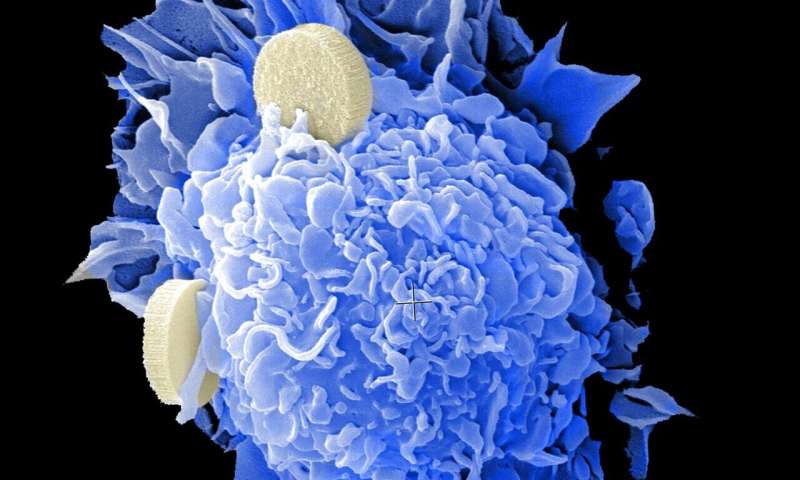
In a study carried out in mice at the University of Chicago, researchers found that lasofoxifene outperformed fulvestrant, the current gold-standard drug, in reducing or preventing primary tumor growth. It also was more effective at preventing metastasis in the lung, liver, bone and brain, the four most common areas for this cancer to spread.
Additionally, while fulvestrant and similar drugs often cause unwanted, menopausal-like side effects, lasofoxifene prevents some of these symptoms. The research was published on May 13 in Breast Cancer Research.
“I think people should be very excited about this,” said senior author Geoffrey Greene, MD, Ph.D., Chair of Ben May Department of Cancer Research at UChicago. “In addition to being more effective, this drug is better able to treat the whole person, including bone density and some vasomotor symptoms, such as vaginal atrophy.”
About 75% of breast cancers are estrogen receptor positive, or ER-positive. This means that cancer cells have receptors that respond to the hormone estrogen and use it to feed the tumor and cause it to grow. Postmenopausal patients are often treated with drugs that suppress estrogen production, called aromatase inhibitors.
However, around 40% of patients eventually become resistant to this treatment. Importantly, some of these tumors develop mutations in the estrogen receptor that make it active all the time, which contributes to aromatase inhibitor resistance. When that happens, the patient is usually switched to an estrogen receptor antagonist such as fulvestrant. These drugs work by blocking the estrogen receptors that feed the cancer.
While effective, drugs like fulvestrant can cause side effects similar to menopause, including bone density loss, hot flashes and vaginal atrophy. “You get these undesirable side effects that really make people unhappy,” Greene says.
Originally developed to prevent osteoporosis, lasofoxifene is a selective estrogen receptor modulator, a type of drug found to have both estrogenic and antiestrogen effects in different tissues, which are mediated by estrogen receptors. Previous observational studies had found that in addition to preventing bone loss, it was also effective at preventing breast cancer, reducing the incidence of ER-positive breast cancer by around 80%, compared to other drugs.
“It has a good safety profile, maintains bone density, prevents vaginal dryness and doesn’t stimulate the uterus,” Greene says.
But while it was clear that lasofoxifene could help prevent breast cancer, it was not yet known whether it also had tumor-fighting properties.
For the new study, UChicago researchers worked with mice that had ER-positive breast cancer tumors with activating ER mutations. They treated some of the mice with lasofoxifene, and some with fulvestrant. They also tested both drugs in combination with palbociclib, a common chemotherapy drug that works by preventing cancer cells from multiplying.
They found that lasofoxifene was more effective than fulvestrant at preventing tumor growth and reducing metastases when used on its own. Adding palbociclib improved the effectiveness of both drugs, but once again, the lasofoxifene/palbociclib combination was more effective.
“This study demonstrated that lasofoxifene seems to be superior, both alone, as well as in combination, compared to fulvestrant,” Greene says.
In addition to having fewer side effects, lasofoxifene offers several other noteworthy benefits. Unlike fulvestrant, which has to be injected, lasofoxifene can be taken orally. It also has a long half-life, which means it lingers in the body for a long time.
“What you want is that every time a new estrogen receptor is synthesized, especially if it has a mutation, that there’s a drug there to block it,” Greene explains. “One of the advantages of lasofoxifene is that it’s more likely to be there to do its job.”
A phase 2 clinical trial is now underway at UChicago Medicine to study lasofoxifene as a second-line treatment in postmenopausal women with ER positive metastatic breast cancers that have ER mutations. A separate clinical trial, now enrolling patients, will study lasofoxifene in combination with abemaciclib, a chemotherapy drug similar to palbociclib.
Source: Read Full Article


